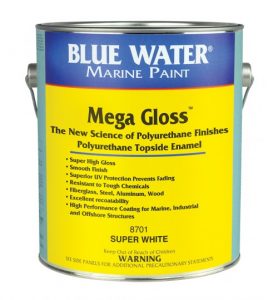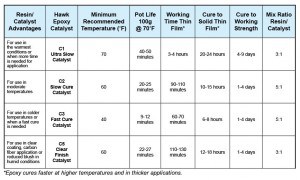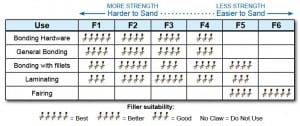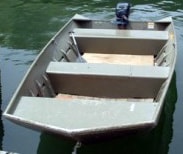When painting a boat used for hunting/fishing, such as a Jon Boat, typically a flat finish is desired so you’ll want to use one of our camouflage paints. A primer coat is used to help the paint adhere to the aluminum surface and provides an extra layer of protection from corrosion. You may also use Aluma Hawk, which is a paint and primer in one.
The Aluminum Boat Paint Green or Aluma Hawk (available in Black, Jon Boat Green, Blue, Sand, White or Aluminum Grey), will serve as paint and primer in one so no need to purchase a primer! Aluma Hawk is one of the easiest and most popular paints for your aluminum boat, and available in (white, blue, Jon boat green, black, aluminum grey, and sand). These are both a paint/primer in one that can be applied to most surfaces with little preparation needed. For more application details see our ‘how to paint an aluminum Jon Boat’ article.
How do you paint Aluma Hawk on a boat?
You can use a brush, roller, or spray gun. Most applications will need 2 coats of Aluma Hawk following the proper dry time requirements. No sanding is necessary between coats of Aluma Hawk if less than 48 hours between applying coats. If needed, MEK (Methyl Ethly Ketone) can be used for thinning, as well as clean up.
 If you desire a gloss finish, look to the Mega Gloss by Blue Water, available in quarts and gallons, is affordable, easy to apply, and only recommended for above the waterline. This topside paint works best in very thin coats and can be used on fiberglass, wood, aluminum, and steel; see the prep recommendations found on the product page on the “how to use” tab. The Mega Gloss Primer is recommended when applied to bare metal, if you have concerns about sealing your aluminum, see the Bottom Protect by Blue Water for a barrier coat. See here for more application tips.
If you desire a gloss finish, look to the Mega Gloss by Blue Water, available in quarts and gallons, is affordable, easy to apply, and only recommended for above the waterline. This topside paint works best in very thin coats and can be used on fiberglass, wood, aluminum, and steel; see the prep recommendations found on the product page on the “how to use” tab. The Mega Gloss Primer is recommended when applied to bare metal, if you have concerns about sealing your aluminum, see the Bottom Protect by Blue Water for a barrier coat. See here for more application tips.
You have many options when painting aluminum. Your use of the boat, the allotted budget, and the amount of time you want to spend on the project may help determine the right paint for you. For more information see our ‘topside boat paint options’.




 How to Fix a Leaking Seam or Rivet on Aluminum Boat
How to Fix a Leaking Seam or Rivet on Aluminum Boat